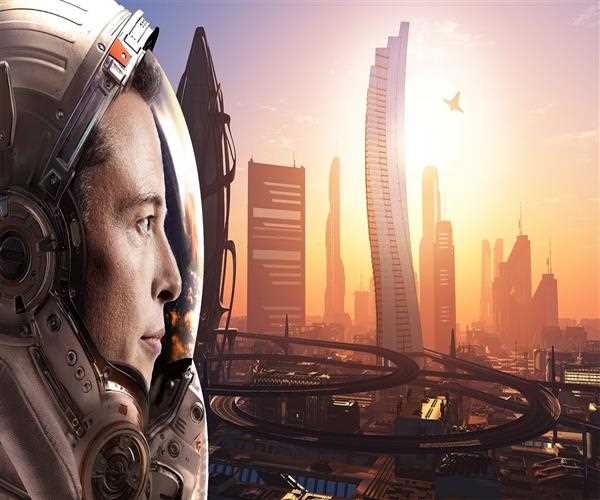Search here

15-Dec-2024 , Updated on 12/16/2024 12:29:03 AM
Elon Musk Wants To Put People On Mars By 2030. Really? Possible?
SpaceX’s enigmatic chief, Elon Musk, has always envisioned the goal of becoming a space-faring civilization. Central to this dream is his set objective to have established a colony on Mars by the year 2030. Despite the fantasy of living on the Martian surface and wanting to explore the red planet, what is actually known is that getting to Mars and existing on it takes great technological prowess and great amounts of money and organizational effort. Below is a breakdown of Musk’s plans, the possibility of such aims, and their implication for humanity.
1. SpaceX's Roadmap to Mars
This plan is still part of Musk’s visionary thinking, and it is centered on SpaceX’s Starship, which is a fully reusable spacecraft for interplanetary missions. Key elements include:
- Starship Development: For now, the spacecraft is still being tested, and it will be used to transport cargo and crew to Mars.
- Refueling in Orbit: Starship’s missions are based upon orbital resupply where necessary to guarantee that Starship will have fuel for the Mars’ trip and back.
- Cost Efficiency: Another goal of SpaceX is to reduce the cost of space travel manyfold in order someday to make Mars colonization affordable to many individuals.

2. The 2030 Target: An Overly Ambitious Timeline?
The objective of this 2030 is a challenge given the human mission to be accomplished on another planet. Some factors to consider:
- Technological Readiness: Overall, SpaceX has learned quickly, but Starship is not yet fully developed, and Mars-targeted systems like personal life support exist yet.
- Unpredictable Challenges: The space radiation has become one of the major challenges that SpaceX has to face, together with habitat construction and psychological impact on the astronauts.
- Funding Constraints: Musk has said that the first mission to Mars would cost $10 billion, and this money cannot be found within SpaceX alone.
This timeline fuels critics’ doubts that naming the first crewed mission might be beyond 2030, according to experts.
3. Challenges of Colonizing Mars
Mars is an unfriendly planet; when it comes to human habitation, the challenges are quite immense. These include:
- Harsh Climate: Mars has an extremely cold climate that can drop to subzero forms below 100 degrees Celsius, making it uninhabitable.
- Radiation Exposure: With no magnetosphere, radiation emitted by the universe threatens Mars’ surface.
- Limited Resources: The food must be imported, but the colonists would need to produce things like water and oxygen from the Martian soil.
- Long Travel Times: A journey to Mars one way takes between 6 and 9 months and results in isolation and compromise of the health status of the astronauts.
Some of these problems are being handled by SpaceX, but colonization on a larger scale will call for multinational effort and enhanced technologies.
4. Why Mars?
Mars was chosen by Musk because of its potential to support human life. Unlike other planets, Mars has:
- An Atmosphere: While being thin and largely non-existent, Mars’ atmosphere can be used for resource management.
- Water Availability: They pointed out that some form of life can possibly exist on Mars due to the detection of water ice on the planet.
- Earth-Like Day: Like the Earth’s day, Mars’ day is nearly equal in length, which accounts for easy adaptation to different timings.
These make Mars the right destination for mankind’s next home.
5. Steps SpaceX is Taking
SpaceX’s strategy involves incremental progress to reach its goals:
- Cargo Missions First: Starship The lunar mission will be to place uncrewed Starship missions on the surface of the red planet Mars to deliver equipment and supplies.
- Building Infrastructure: The first ones that will be developed are habitats, plant and animal feed production installations, as well as fuel production facilities.
- Global Partnerships: SpaceX is expected to form strategic affiliations and partnerships with NASA and other space organizations as this works to share resources in this line of business.
To learn more about such approaches for cooperation, you can read more in articles, for example, The Role of NASA in Space Exploration.

6. Is It Really Achievable by 2030?
I can understand the job Musk has set for Elon—that’s cruisingly inspiring—but most of the automotive gurus consider it too ambitious. Here’s why:
- Testing Timeline: The company requires multiple successful Starship flight campaigns before making a shot at Mars, which might be years away.
- Regulatory Hurdles: As a way to successfully launch a Mars mission, there are several legal requirements to adhere to that are international and environmental in nature.
- Unknown Variables: There remains a lot of uncertainty on Mars, starting with dust storms and ending with microbial life.
However, Musk has made many a feat appear possible, what with, for instance, reusable rockets or Starlink.
7. Implications for Humanity
If SpaceX succeeds, the impact on humanity will be profound:
- A Multiplanetary Future: This argues that man should go colonize the planet of Mars, as this may make the difference in the event of any disaster on Earth.
- Technological Advancements: In fact, Mars colonization is an effort that could spur the development of reusable energy, robotics, and artificial intelligence technologies.
- Inspiring Generations: With such a vision, Musk made millions enthusiastic about science and space again by bringing your attention back to it.
Such changes are discussed in other views, including Space Colonization and Its Impact.
Conclusion
It is both visionary and motivational to hear Elon Musk plan to have people living on Mars within the next ten years. Despite the obstacles, the success that SpaceX has experienced makes the proposition of such a mission start to appear more and more like something out of science fiction. That is why the goal to achieve such a level of technological advancement will need more efforts in terms of innovation, cooperation, and persistence than any other human project in historical perspective.
Please let me know if you’d like me to make other changes to the content!!

Student
Being a professional college student, I am Shivani Singh, student of JUET to improve my competencies . A strong interest of me is content writing , for which I participate in classes as well as other activities outside the classroom. I have been able to engage in several tasks, essays, assignments and cases that have helped me in honing my analytical and reasoning skills. From clubs, organizations or teams, I have improved my ability to work in teams, exhibit leadership.
Join Our Newsletter
Subscribe to our newsletter to receive emails about new views posts, releases and updates.
Copyright 2010 - 2025 MindStick Software Pvt. Ltd. All Rights Reserved Privacy Policy | Terms & Conditions | Cookie Policy